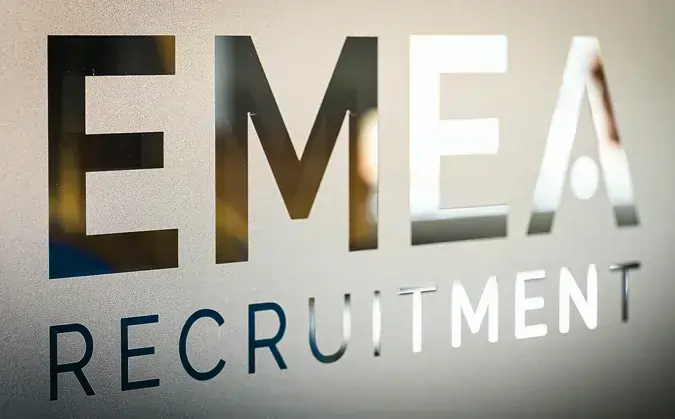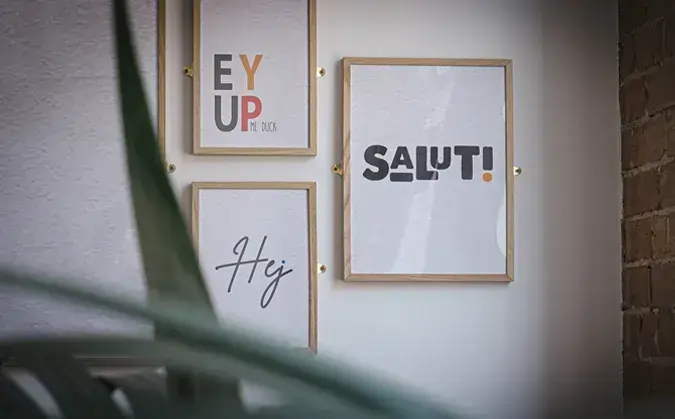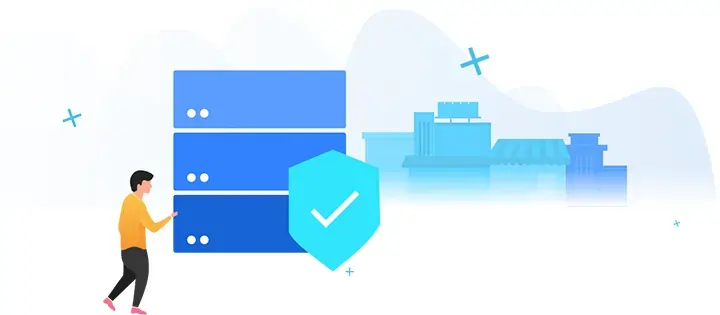Veronique Frasnetti - VP Strategic Purchasing Hospital Care Division at B. Braun


Véronique Frasnetti has held many different positions with increasing seniority at B. Braun, which is a major company in over 60 countries. She is currently the Vice President of Strategic Purchasing in the Hospital Care Division.
As you’ve been with B. Braun since 2004, how does the company retain high potential employees?
If you show willingness to develop yourself, B. Braun will support you. We have all sorts of internal training. For example, if you would like to be a project manager, we have very good internal training in which you will also get useful tools. Afterwards, you could be running a project beside your activities. There are also chances to learn languages - there is big support to have trainings in general.
Time is flying when you are within B. Braun, because you have so many opportunities to grow both professionally and personally. This is the way they retain talent.
B. Braun has also the advantage of being a big company, with 66,000 employees approximately in 64 countries; there are a lot of possibilities. Perhaps it is more complicated in a very small company.
How did you plan your career?
Originally, I was in cocoa trading. This is what I always wanted to do when I was younger. I enjoyed it a lot, but with family, I decided I wanted to separate from working with stock exchange. It’s very exciting, but it is so exciting that you think, how can I manage to have kids and such a job alongside?
Therefore, I decided to go into Procurement, because it’s very close. However, in a different manner, you do not have all that stress of working with the stock exchanges being totally dependant on what happens there and being bound by the opening hours (that can be during your night, depending on the timezone) - you can better plan your time and organization. Consequently, I left trading and went into Procurement, where I could still use my negotiation and commercial skills. Then I did work for some companies in Procurement, until I found B. Braun, where I thought, this is the place.
The best way of developing your career is to be in a company which also wants to develop itself, to be state-of-the-art, to go for new things. This is what I could find here, so I have stayed working there ever since!
What advice would you give to leaders who are managing large acquisitions and integrations?
I would say not to underestimate the integration phase. I have seen, in certain companies, that after a few months, everybody thinks that the acquired company is integrated just because the purchase is completed. This can cause problems.
It is very important that, when you acquire a company and want to onboard it properly into your system, you harmonise the processes at first. This step will take a certain time, but represents a chance for both entities.
There is also the need to carefully consider the people aspect, as the employees of the acquired company are usually quite afraid, because, when you hear about an acquisition, you say, wow, is my job going to be there still or not? So, reassure your people! This is very important, because - when you acquire a company - beside the products and customers, you also acquire the knowledge of the people, and you don’t want to lose this at all.
I can say that, very happily, we acquired a company three years ago and all went well. We are working really nicely together. But you need to take time to integrate them; this way, everything turns out much better than if you tried to let them swim - especially when you come into a big group like B. Braun. So, I would say the integration part is as important as the due diligence and acquisition part.
Can you define Procurement best practice?
I would say best practice is to have a state-of-the-art and transparent set of processes, which is adapted to your company size, industry sector, strategy... because these parameters also have a very big importance on what you shall do or not, meaning not every state-of-the-art activity is suitable for your company.
You shall of course look at the level of maturity of your organisation. I assume you know the maturity curve, in which you see all levels, from solely transactional actions for Procurement, up to vertical integration. You really need to understand where you are, so you can grab the right set of tools you need. This is something that I would recommend. As well, you should concentrate on planning a proper strategy.
A lot of people are talking about source to contract now, which is of course important, but before the source to contract, you should plan your strategy. Before buying something, you should be sure you’re buying exactly what the company needs, the most suitable product/service in the right quality, from the suppliers you want to grow with the aim to support your company objectives, future plans.
You need to have a Procurement strategy aligned to the company strategy and with the major stakeholders, which will be accepted and followed throughout the company, since not only Procurement is following the Procurement strategy, but the entire company, as well.
In the medical industry, it’s very important that you plan far ahead, so this is something which should be looked at, coupled with supplier development. Beside source to contract, you need to monitor, develop, maybe phase out, some suppliers.
Has your approach to Procurement best practice evolved since the COVID-19 pandemic?
Definitely. It has brought everything upside down. Now, geo-political monitoring is a must. It started with COVID, followed by the RuUkraine conflict. Our environment is permanently challenged. If you do not follow what is happening, then you’re too late - you can only react, but not mitigate.
Therefore, best practice is now a deeper risk monitoring, being proactive and not reactive. Before, of course, that was always something that was looked at, but not life, rather on regular set time. In the past, there were force majeure sometimes, but - since COVID - some are notified almost every week and now, with the energy situation, in addition there are increased fears of bankruptcy.
Understanding your supply chain is getting even more important. In the past, it was almost a given that, when something was ordered, you would get it, perhaps there was a small delay, a slight price increase or something, but it would be available. Since COVID, the way we are working totally changed, some prices sky-rocketed by 500%-plus and availability, as well as transportation, became a hassle. We needed and still need to find ad-hoc solutions.
Is it possible in this current environment to innovate with suppliers virtually when you can’t see them face-to-face?
COVID made us change our way of doing work. Before, people would meet face-to-face a lot. Suddenly, we could not anymore, so another way of working had to be started. Thanks to the available software, we could switch to virtual contacts quite easily, since they are really user friendly; you can talk to an almost unlimited number of participants, share documents, and it’s fully reliable in terms of functionality and quality. If we had faced the same situation five or six years ago, that would have been an even bigger disaster.
We even started new actions, which we could not do before. As an example, we facilitated virtual sustainability meetings with suppliers, having 50-plus people together on the line that were based in various continents. Allowing everybody to have the same information level and benefiting from many inputs. Such meetings would not have been feasible face-to-face, as it would have been too time consuming and cost a fortune in travel. In this sense, the complicated situation made us progress faster.
Of course, there is a moment when you need to sit together. If our supplier really wants to understand some specific needs, for example, they need to see our lines, our products, and we also need to see their production equipment, to exchange, because - at the end - both entities have knowledge they can share. But we were surprised about the big portion that can be done online, which we would not expect before.
I would even say, in some cases, innovation comes easier to us now that we can have more participants online than in a regular meeting face-to-face. The information flow is much faster, likewise the following actions. I really think this new aspect is making our life much easier.
Is there a myth about your profession that you want to debunk?
The biggest one I see is: Procurement is all about price negotiation. Of course, price negotiation is part of it, but it is not all. Firstly, you must have the correct product in terms of quality, at the right place, in the right quantity, at the right time, and at the best possible price. The price comes at the end, because, as an example, if you go for a cheap product that is of poor quality, it might end up in a disaster.
There are a lot more tasks you need to do beside negotiating; a very important one is innovation gathering. Procurement is also about bringing innovation into your company, acting as incoming channel. Procurement is like the eye of the company to the outside, to the beginning of the chain really - the opposite of our salespeople. We are the ones who see external innovation first; we need to monitor this. If we see interesting innovation, we shall take that into the company to the relevant department/person.
Everybody is now concentrating on sustainability. This includes, of course, the actions that you will undertake in the company, such as energy saving, to be green, but it’s also the material you will be buying, trying to go for sustainable materials. Like I said before, we are somehow the eyes of the company into the supply market and - like for innovation - this applies to sustainability.
Also, Procurement is about monitoring the suppliers and the number of them. You don’t need to have thousands of suppliers, which in fact is too often the case. What is important is to have a few (sufficient) reliable suppliers or fewer suppliers that can cover a bigger part of your needs to allow a win-win situation. There, also, it’s not about negotiating prices only; it’s about understanding the capabilities of the supplier, their strategy, the level of risk, versus our needs to see if and where it can match.
It’s also about choosing the supplier you want to grow, the one you want to phase out, and the one you will keep as such, because they don’t have more capabilities, for example, but you still need them for an essential range of products.
When you have a crisis, like we had for the past two years already, if Procurement is not working adequately, meaning having the proper agreements in place and a good relationship with the strategic suppliers, good enough that you can be prioritised when necessary, you might end up in important supply issues.
What does diversity mean to you?
Diversity is a very important topic that is being spoken about a lot currently. In our company, we recently had some diversity meetings, where people could exchange their view on what we should do.
Of course, there is gender, there is religion, but I would say it goes much beyond that; it’s also about personality, way of acting. If you compare people from certain regions to other regions, or even one person to another one, they are different. This is already diversity, and this represents an asset if you can have a mix of various personalities.
I strongly believe that the future is with inclusion, clearly, but in a broad way, going as far as how the people are, how they apprehend to work, to risk, everything, because all that is bringing more value and balance into your teams.
When hiring people, why not have a CV without gender, without nationality and without age? Focusing on the personality beside the pure work aspects. Diversity is also, for example, on age. Younger and older people don’t exactly do things the same way, but they can both be an asset and benefit from each other.
It would be good if we could look at the profiles based on what they achieved, the knowledge they bring and their personality, instead of the gender and so on… We should get rid of that, I would say, and concentrate more on what the person can bring to the company.
How does cultural awareness impact business relationships?
I think it helps a lot. If you speak the language, of course, you’re going to be closer to that person than if you don’t speak the language, but this is not the only way to get close to somebody, or to have a smooth and harmonious business relationship.
In some regions, if you don’t have dinner or lunch, there is no way of talking successfully about business, because for certain people it is very important that you sit together, talk about different subjects, have some small talk, eat something, drink a glass of wine, before talking business. If you don’t know this or just skip it, you will not start in a good atmosphere. You should consider these specific aspects and adapt, like the other party will try to adapt, as well. I think it’s very important.
You could be hurting people, just because you have no idea about their culture. And I would recommend to any person being in contact on the purchasing side or on the sales side to prepare themselves by gathering information about the cultural aspects.
An example, in Japan, if you give someone a business card, you need to hold it with two hands; if you don’t, it’s disrespectful.
We need to create that climate of trust and collaboration with our suppliers/partners to allow successful business relationships, which can be greatly facilitated by having cultural awareness.
Thank you to Véronique for speaking to our Procurement & Supply Chain recruitment team in Switzerland, led by Neil Cope.
Views and opinions contained within our Executive Interviews are those of the interviewee and not views shared by EMEA Recruitment.






You can also use your social account to sign in. First you need to:
Accept Terms & Conditions And Privacy Policy